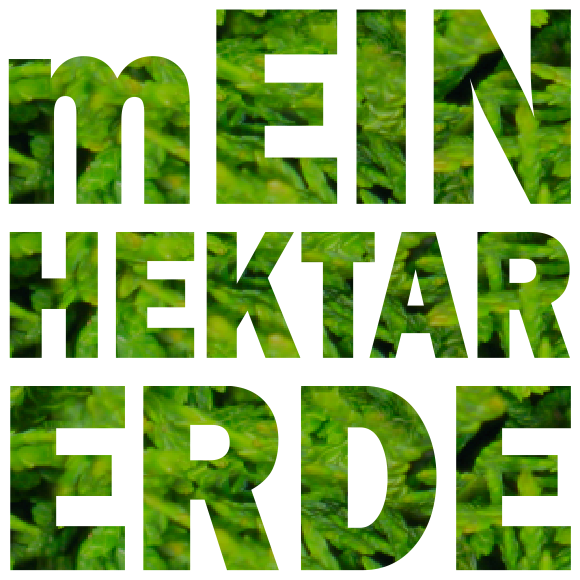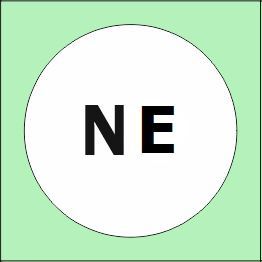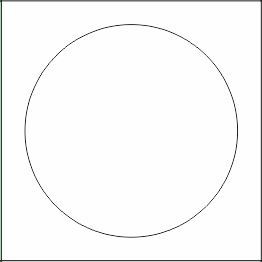Home page Bookstore & pkp Verlag pkp Verlag pkp Authors Pierre Kynast My hectare earth
My hectare earth
|
Picture: © Pierre Kynast The texts in this document have been translated from German into English with the help of the machine DeepL.com
Inspired by the thoughts of Anastasia
ForestGardenSettlement
Foreword "My hectare earth" is not a call to hermitage. With the following draft for the establishment of a ForestGardenSettlement I would like to begin with the realisation of the aim of "my hectare earth"; the creation of new habitats and communities – the establishment of ForestGardenSettlements. The plan is long-term. In the sense of revitalising the earth, for example, degraded arable land is the most suitable place for the creation of ForestGardenSettlements. The current restrictions on the use of arable land are not a hindrance, but actually conducive to this for the time being. After all, the first concern when building up My hectare of land is the revitalisation of the earth. We create gardens for ourselves and our descendants in which we can stay temporarily at first and live in later. My ambition in the creation of the present draft was extreme scarcity, simple and clear regulations, as much freedom as possible, no more regulations than necessary. I hope that the concept and the basic ideas will be clear to the interested reader from the plan sketch and the following draft statutes. Please feel free to contact me at any time if you have any questions, suggestions or interest in participating in the establishment and vitalisation of ForestGardenSettlements.
Pierre Kynast, Merseburg, 11.11.2020 e-mail: info@pierrekynast.de
Preamble This ForestGardenSettlement serves the revival of the earth and the development of the human being on earth. The building or structural development of the ForestGardenSettlement in the conventional architectural sense is not a priority concern – especially on communal land – and should be avoided as far as possible. The unanimity rule, which is obligatory for the disposal of communal land, serves as a high hurdle to keep interference with the natural development of the mineral, plant and animal kingdoms to a minimum. The ForestGardenSettlement consists of one hundred and twelve privately owned ForestGardens of the same size and at least one hundred and forty-four parcels of land of the same size of a ForestGarden, in accordance with the following plan and statutes.
Sketch plan
Area: Total 309,76 hectare (1.760 x 1.760 meter); 135,52 hectare ForestGardens; 174,24 hectare common area
§1 (1) The individual parcels of the ForestGardenSettlement are each one hundred and ten by one hundred and ten metres in size and border directly on each other. (2) Parcels of land in private ownership (ForestGardens) may be owned exclusively by one or more natural persons. They are the free property of the owners. A plot of land measuring one hundred and ten by one hundred and ten metres is indivisible and is owned jointly by all registered owners with equal shares and voting rights. A natural person can only be (co-)owner of one ForestGarden within the same ForestGardenSettlement. (3) A five-metre wide verge is measured from the outer borders of a ForestGarden and is permanently kept clear of trees and shrubs, buildings or other obstructions by the owners of that ForestGarden. The vegetation on these strips should be exclusively meadow. All ForestGarden owners of the entire ForestGardenSettlement have the right of way on these meadow paths. The right of way entitles the owner to make such a meadow path accessible at any time and in its entirety.
§2 (1) Seven ForestGardens each enclose a community plot the size of a ForestGarden in their middle. This parcel of land is jointly owned by the owners of the surrounding seven ForestGardens (community of seven residents). (2) Four blocks of seven ForestGardens each enclose a community plot the size of four ForestGarden in their middle and are surrounded by a further twenty-eight community plots. These thirty-two parcels are the joint property of the owners of the four times seven enclosed ForestGardens (community of twenty-eight residents). (3) For all plots of land in common ownership, the basis for the decision on the disposal of the plot of land shall be unanimity of the community of residents (seven or twenty-eight). Every natural person who is (co-)owner of a ForestGarden is at the same time (co-)owner of the corresponding communal plots of land belonging to the community of residents at seven and twenty-eight. Each ForestGarden has one vote in each community.
§3 (1) The entire ForestGardenSettlement consists of four adjoining communities of twenty-eight residents, with the corresponding ForestGardens and community plots. (2) All (co-)owners of a ForestGarden in the ForestGardenSettlement have rights of way on all parcels of common property, regardless to which community of residents they belong.
§4 (1) Access to the ForestGardens via the surrounding communal plots is via four straight extensions of the meadow paths of the central axes of the neighbouring communities of twenty-eight. Ten-metre wide meadow paths will be created and permanently maintained on the corresponding community plots. (2) The construction and permanent maintenance of these access roads will be the responsibility of the respective community of residents, for access road:
§5 (1) If the owner(s) of a ForestGarden intend to give it up, the (co-)owners of a ForestGarden from the relevant community of seven residents shall have the primary opportunity to take over these ForestGarden. If there are several applicants, the decision is made by drawing lots. The handover/takeover of the ForestGarden is free of charge and unconditional. (2) If there are no interested parties in the community of seven residents, the (co-)owners from the relevant community of twenty-eight have the possibility of taking over the property. If there are several applicants, the decision shall be made by drawing lots. The handover/takeover of the ForestGarden is free of charge and unconditional. (3) If there are also no interested parties in the community of twenty-eight residents, all (co-)owners of a ForestGarden in the same ForestGardenSettlement have the possibility of taking over. If there are several applicants, the decision shall be made by drawing lots. The handover/takeover of the ForestGarden is free of charge and unconditional. (4) If there is no interested party within the entire ForestGardenSettlement, the ForestGarden may be freely transferred to other natural persons.
§6 (1) All disputes between (co-)owners of the same ForestGardenSettlement shall, if necessary, be resolved by arbitration between the persons in dispute. The disputants shall unanimously select a mediator from among the (co-)owners of the ForestGardenSettlement and negotiate the matter with this mediator in camera until the dispute is resolved. If this does not take place within thirty-six days, the mediator will present a solution within a further nine days, which both parties undertake to accept.
§7 (1) The name of the ForestGardenSettlement shall be "Freistatt" (German). In order that several ForestGardenSettlements can bear this name, an additional name is added to the individual name, for example "Freistatt One".
Pierre Kynast, Merseburg, 11.11.2020
|
One hectare of earth for every family; indivisible, not lendable, not seizable, not to expropriate, not to sell, not to tax – intouchable, inviolable; likewise, all the earth's yields of this hectare; they are solely in the free disposal of men, who enliven this hectare of earth as their hectare of earth. In short: free living space for free people – in society.
My hectare earth The earth is our living space, the place where living nature unfolds. We humans are part of this living nature, a constantly perfecting whole. We are inclined to see our technology and the institutions of our civilisation as the pinnacle of our creative work, the greatest contribution we can make to the development of the world. The more we do this, the more we are in danger of overlooking the fact that this technology and these institutions are separating us further and further from living nature. It is this nature that renews and unfolds over and over again between heaven and earth. It is we who build cities that are constantly decaying and have to be maintained artificially. It is we who are devastating nature and the soil with technological agriculture. It is we who damage the atmosphere and carry our waste into space – and we still call this progress far too often. We call growth the emergence of all natural life. We also call growth the increase in technical production and consumption of the goods produced. In this process, money leads to an equalisation of all production goods. Measured in terms of money, the work that goes into a tank is worth as much as the work involved in maintaining the landscape or making clothes. One euro is one euro, no matter how it was earned. When calculating the gross national product, no distinction is made between what is converted. All goods and services flow in equally, according to the number of money. "What is important is that goods and services are converted, more and more, at ever shorter intervals." This is the constant demand of the credit-money system, in which more and more should flow back than was spent. Electricity or green electricity, important is that a meter can be connected in front of it and more and more is produced, power stations, wind turbines, solar cells – important is that it rotates, faster and faster. This kind of growth is coming to an end. The natural ecosystems do not need our help to grow in the eternal cycles. The apple tree grows, blossoms and bears fruit, year after year, if only we let it and do not destroy the conditions in which it does so. Exactly the same applies to the whole of nature, right down to man. Man is also capable of intervening in nature with understanding. Just as he can destroy the conditions of natural prosperity, he can promote them and, if necessary, even restore them. Just as we flatten the earth hectare by hectare, we can help to revive it hectare by hectare. We can be co-creators – gardeners in the Garden of Eden.
My hectare earth The earth is not a commodity. The earth is the mother of all commodities and man, it can be said, is the father of commodities. Mankind has put a lot of creative power into goods – especially in the last 200 years – and in the same measure the earth has given him the material for it. Every commodity is made of earth, in this very precise sense. And because the earth is not enough for them in this respect, some people think about how they could bring parts of other heavenly bodies to our earth... Man is the father of many things. But they do not become commodities just because man creates them. Only when they are sold, when money comes into play, this misleading neutrum, do they become a commodity. The earth is not a commodity. It can therefore neither be bought nor sold. The earth is man's living space, source of food and home. Standing between heaven and earth, it is the living connection with both that makes man human. This living connection of man with the earth is the basic condition for his free development as a human being. Everything that cuts him off from this connection harms him. The life of many people in the materialistic-technocratic civilisations is largely and long separated from the earth, the living home of the mineral, plant and animal kingdom. In wide spaces and over long periods of life, man spends his existence in the present civilisations between goods. The paving stone is as much a part of it as the aeroplane, his flat or house and even his food. Self-evident things become a problem, they make work. The Garden of Eden is here, but we have buried it under concrete and driven it out of our souls. We dream of prosperity and my goods with it, we should start dreaming again of the Garden of Eden.
My hectare earth is the next step to the realisation of the Garden of Eden for every person who wants to. It is the ancestral basic right of every human being to live in harmony on and with his earth. Let us make use of this fundamental right. If we remain faithful to the earth, we unfold our human nature with it. Rhizome instead of hierarchy, trees instead of pyramids, self-control and autonomy.
Pierre Kynast, Merseburg, 10.11.2020
__________________ Sources on the subject: Anastasia. Volume 1 to 10. Vladimir Megre
|









 MeadowPath (ForestGardens and access roads
MeadowPath (ForestGardens and access roads ForestGarden
ForestGarden Common property
Common property Common property
Common property